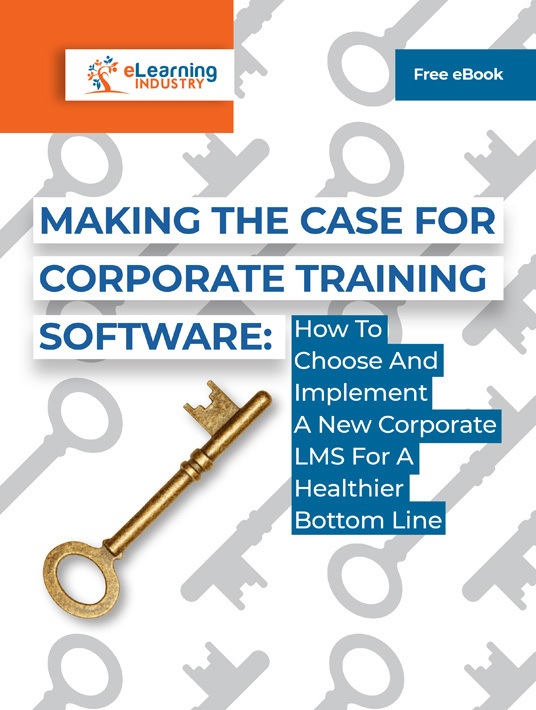Why Your Current System May Not Be The Best LMS For Corporate Training
Learning Management Systems (LMS) are pretty versatile. They can monitor staff by having them clock in and schedule office tasks. They can craft deeply detailed in-house courses, building skill while preserving trade secrets. In some cases, they can even track corporate assets like cars and digital devices. However, you need a system that’s just right for your organizational objectives. The best LMS for corporate training that accommodates your remote workforce. And gives your L&D team all the tools they need to deploy and monitor your training initiatives. What are the tell-tale signs that your current online training system isn’t up to par?

1. Persistent Slow Uptake
Apart from direct training, employees log into the LMS every day. They might use it to schedule office tasks, manage equipment or perform their duties. It can send client quotes, design invoices or fill timesheets. If your staff is consistently reporting usage difficulties it may be time to tweak. It’s one thing if new hires or older non-techie staff are struggling. But if there are repetitive complaints, especially if they revolve around the same topics something needs to change. Review the system to see where it’s lacking, then use your findings to find the best LMS for corporate training that’s intuitive and user-friendly.
2. Lacks Reporting Features
Metrics and data collection are -or should be- a standard part of any software. But the way your LMS collects data, and the type of data it collects, there lies your variance. Since we’re focusing on the training component of your LMS, you need specific analytics. You need to see how your staff is progressing. How fast are they going through their units? Are assessment methods effective? What are their completion rates? You need automated reports so that you can easily compile and evaluate your data. Your LMS requires the tools to parse all this information and make sense of it. If it lacks these capabilities, start shopping. Customizable reports are another key criterium to consider when choosing your new platform.
3. Can’t Scale To Fit Your Workforce
The average software is purchased with a set number of users in mind. You might have an upper limit or your vendor might apply a per-user fee. This makes sense within the given parameters. After a certain cap, paying for every new user might become too expensive. For example, you start paying overage fees because you’ve exceeded the max active user count. At the same time, if you happen to trim your work-force, your LMS should shrink with you. If it won’t let you cut costs for fewer numbers, you may have to ditch it for a smaller package.
4. No Mobile Options
Staff members who work outside HQ probably need the LMS more than in-house workers. The LMS is their primary means of contact with colleagues. It governs everything from delegation to collaboration. This covers external partners like temps and contractors. But it’s also essential for sales teams and delivery staff. They only spend a few hours in the office every day so the LMS is their corporate lifeline. Naturally, if its mobile options are inadequate, you need to upgrade and opt for the best LMS for corporate training. Switch to something with an app, or with viable optimization tools. Another feature to look for is responsive support. Which saves your L&D team the time and trouble of developing different versions of the content.
5. Inadequate Vendor Support
Organizations that function via LMS don’t need too much vendor assistance. At the point of sale, the business takes the reins and runs all internal systems themselves. But there are times when you’ll need help. Changes in tech may require a complete overhaul. Regulation shifts are often implemented via operation routes rather than individual companies. So, if your sector develops new compliance rules, regulatory bodies will engage LMS vendors rather than businesses themselves. If your vendor is unavailable at that stage, you may have to buy a completely new product to maintain corporate eligibility. When assessing the new corporate LMS vendors, verify their variety of support options and what it will cost.
6. Limited Branding Options
Things like font and color may not seem all that important. But they help you stamp your organizational identity. They create a mood and influence attitudes within the office. They also foster camaraderie and ownership in a way that generic software can’t. Thus, whether you’re rebranding and require a new palette or whether you’ve merged organizations and need more scope, it matters. And if your existing LMS can’t accommodate these changes, find a new one that can. It’s a little thing, but it has big consequences for your firm.
An LMS has many advantages over traditional training options. But it still has to be the best LMS for corporate training. So how do you know when it’s time to make a switch? Successive sets of employees, plus staff who aren’t in active training, are having a hard time using it. Its analytics are inadequate, especially for day-to-day non-training functionality. The LMS proves difficult to scale up, down, or out -for external partners. You could tweak or upgrade it to fix these issues… or you could shop around for something new. Weigh your options and decide. In fact, you may want to conduct a Training Needs Analysis sooner rather than later to evaluate the effectiveness of your current system.
Getting new hires into the flow of your work-place is an essential corporate undertaking. How can you be sure you get it right? Download our eBook Making The Case For Corporate Training Software: How To Choose And Implement A New Corporate LMS For A Healthier Bottom Line and discover all you need to know so you can choose and implement a new corporate LMS.








